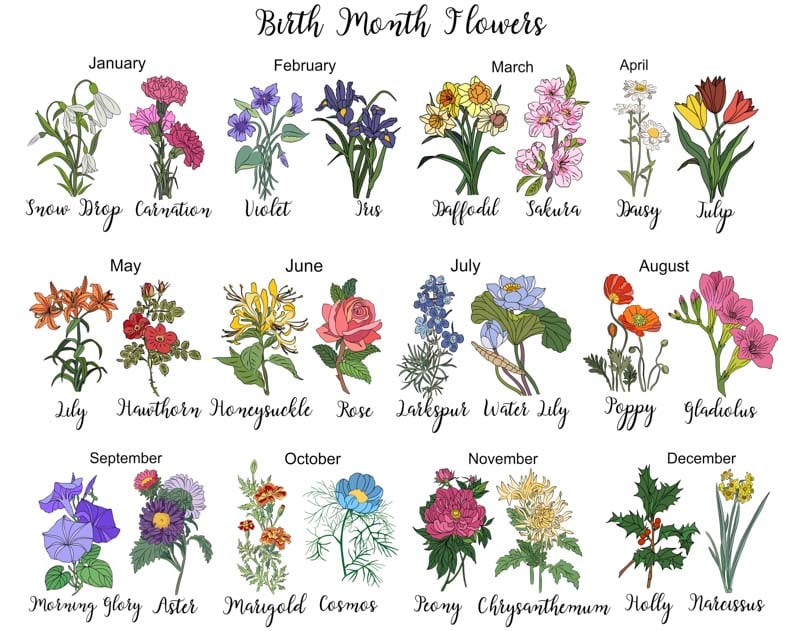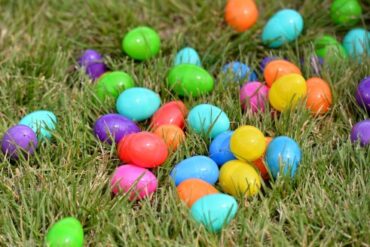A Month-by-Month Guide to Birth Flowers for Parents
Hello, wonderful parents! If you’re looking for a charming and thoughtful way to celebrate your child’s birth month, you’ve landed in just the right place! Just like birthstones, each month has its own unique flower that carries specific meanings and sentiments. This guide will walk you through the birth flower of each month, their special meanings, and creative ideas on how to incorporate them into your celebrations for your little ones. So let’s dive into the blooming world of birth flowers!
January – Carnation & Snowdrop
The year starts off with the lovely carnation and delicate snowdrop as January’s birth flowers. Carnations come in various colors, each carrying a different significance – pink signifies affection, white symbolizes pure love, and red indicates admiration. Snowdrops symbolize hope and the beauty of purity. A bouquet of carnations or a potted snowdrop can be a wonderful gift for a January baby!
February – Violet & Primrose
February children have the sweet violet and enchanting primrose as their birth flowers. Violets represent loyalty, faithfulness, and wisdom. They’re the perfect representation of the deep, steadfast love you have for your child. Primroses suggest young love and are a great way to tell your child they’re your first thought. A violet plant or a bouquet featuring primroses can be lovely additions to your child’s nursery or playroom.
March – Daffodil
Daffodils, those bright yellow harbingers of spring, are the birth flower for March. A bunch of these sunlit blooms reflects the unparalleled joy your March baby brings into your life. Daffodils stand for new beginnings, an apt symbol for the birth of a child. Consider decorating their birthday table with daffodils or gifting them a daffodil bulb to plant in the garden – a symbol that grows as they do!
April – Daisy & Sweet Pea
For the bonny April babes, the birth flowers are the carefree daisy and the fragrant sweet pea. Daisies symbolize innocence, purity, and true love, reflecting the pure joy of childhood. Sweet peas convey blissful pleasure and are often used to say goodbye, which could symbolize the bittersweet feeling of watching your child grow up. A daisy chain or sweet pea-scented items can make for a whimsical birthday gift.

A Comprehensive Guide to Birth Flowers for Each Month
As parents, celebrating your child’s milestones and birth month can be made even more special with the touch of their unique birth flower. Flowers have a language of their own, and each month’s bloom carries a message of love, life, and celebration. Welcoming a new baby or celebrating each passing year can be enhanced by choosing gifts or themes inspired by these botanical beauties. Here are five things every parent should know when preparing to celebrate with birth flowers!
May – Lily of the Valley & Hawthorn
May’s blossoms include the sweetly scented Lily of the Valley and the robust Hawthorn. Lily of the Valley signifies the return of happiness and purity of heart, while Hawthorn represents hope and supreme happiness. You might consider a fragrant Lily of the Valley plant for your May child’s room or incorporating Hawthorn flowers into celebratory decorations.
June – Rose & Honeysuckle
June is graced with the romantic Rose and the sweetly intoxicating Honeysuckle. Roses come in a variety of colors, each with its own symbolism – from red for love, to yellow for friendship. Honeysuckles represent the bonds of love. Decorate your June born’s space with a rose-themed piece of art or a honeysuckle-scented candle to celebrate their month.
July – Larkspur & Water Lily
The bold Larkspur and serene Water Lily are July’s birth flowers. Larkspurs, with their open petals, signify an open heart and ardent attachment; Water Lilies symbolize purity and majesty. Consider crafting a water lily pond scene as a creative project with your July child or incorporating the vibrant Larkspur into their birthday decorations.
August – Gladiolus & Poppy
Gladiolus and Poppy herald the month of August. The Gladiolus, with its sword-like leaves, stands for strength of character and sincerity. The Poppy varies in color and meaning – red for pleasure, white for consolation, and yellow for wealth and success. A Gladiolus arrangement would be an inspiring addition to a study area for an August child, encouraging ambition and determination.
September – Aster & Morning Glory
The welcoming Aster and the reflective Morning Glory are the choicest flowers for September. Asters are symbols of love and wisdom, while Morning Glories represent affection, with their tight spirals unfurling into beautiful blooms each morning. Share a potted Aster with your September child as a symbol of growing wisdom or start a Morning Glory trellis in your garden to watch together.
October – Marigold & Cosmos
Marigold and Cosmos light up October with their warm hues. Marigolds symbolize fierce love, passion, and creativity. In contrast, Cosmos are associated with order, peace, and serenity. These could be great themes for an October birthday party. Share marigold seeds for planting or Cosmos-flavored tea as a soothing gift.
November – Chrysanthemum
Chrysanthemums, rich with color and full of life, celebrate November babies. Chrysanthemums represent loyalty and honesty. They are the perfect symbol for the sincerity and pureness of childhood. A Chrysanthemum plant is a lasting reminder of your child’s november, thriving as the years pass by.
December – Narcissus & Holly
December’s birth flowers are the vibrant Narcissus and evergreen Holly. Narcissus symbolizes sweetness and the desire for one’s beloved to return affection. Holly represents a wish for domestic happiness. Decorate your home with holly during your December child’s birth month as a symbol of your enduring love for them, or gift a potted narcissus as a symbol of sweetness and growth.
Whether you’re planning a birthday party, picking out a personal gift, or simply wishing to teach your child about the significance of their birth flower, these unique botanicals can add a layer of meaning to your celebrations and family traditions. And who knows, you just might inspire a lifelong love of flowers in your child!
See more great Things to Do with Kids in New Zealand here. For more information see here
Disclaimer
The articles available via our website provide general information only and we strongly urge readers to exercise caution and conduct their own thorough research and fact-checking. The information presented should not be taken as absolute truth, and, to the maximum extent permitted by law, we will not be held liable for any inaccuracies or errors in the content. It is essential for individuals to independently verify and validate the information before making any decisions or taking any actions based on the articles.




